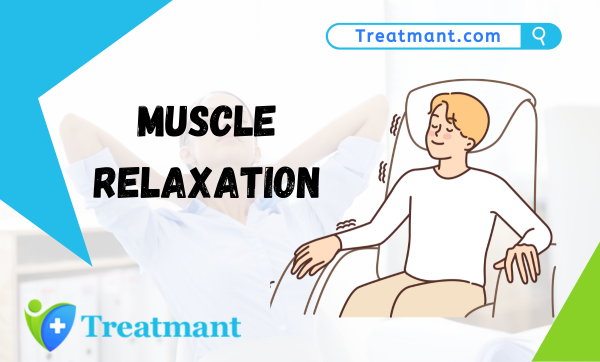
Understanding Progressive Muscle Relaxation:
In today’s fast-paced world, stress has become an inevitable part of our lives. From demanding work schedules to personal responsibilities, it’s easy to feel overwhelmed and tense. However, amidst the chaos, there lies a simple yet powerful technique that can help alleviate stress and promote relaxation: Progressive Muscle Relaxation (PMR).
PMR is a widely recognized method used to release muscle tension and induce a state of deep relaxation. By systematically tensing and then relaxing different muscle groups, PMR allows individuals to become more aware of their body’s response to stress and learn how to unwind effectively. Let’s delve deeper into this technique and explore its benefits.
PMR was developed by American physician Edmund Jacobson in the early 20th century. Jacobson believed that mental relaxation could be achieved through physical relaxation. PMR involves a two-step process:
- Tensing: The individual consciously tenses specific muscle groups, holding the tension for a few seconds.
- Relaxing: After the tension phase, the individual releases the tension suddenly, allowing the muscle group to relax completely.
How Progressive Muscle Relaxation Works:
The concept behind PMR is simple yet profound. When we’re stressed, our muscles tend to contract and tighten involuntarily. This muscle tension contributes to feelings of discomfort and exacerbates stress levels. By deliberately tensing and then relaxing muscles, PMR interrupts this cycle of tension, promoting physical and mental relaxation.
Benefits of Progressive Muscle Relaxation:
- Stress Reduction: PMR helps reduce levels of stress hormones like cortisol, leading to a calmer state of mind.
- Improved Sleep: Practicing PMR before bedtime can promote better sleep quality by easing physical tension and quieting the mind.
- Pain Management: PMR is often used as a complementary therapy for managing chronic pain conditions, such as fibromyalgia and tension headaches.
- Enhanced Mind-Body Awareness: Through regular practice, individuals develop greater awareness of their body’s response to stress and learn to recognize and release tension more effectively.
- Anxiety Relief: PMR has been shown to reduce symptoms of anxiety disorders by promoting relaxation and reducing physiological arousal.
How to Practice Progressive Muscle Relaxation:
Find a Quiet Space: Choose a quiet, comfortable space where you won’t be disturbed.
Get Comfortable: Sit or lie down in a comfortable position, loosening any tight clothing.
Start with Deep Breaths: Take a few deep breaths to center yourself and prepare for the relaxation exercise.
Tense and Release: Begin by tensing a specific muscle group (e.g., your fists or shoulders) for 5-10 seconds, then release the tension suddenly and completely.
Progressive Muscle Groups: Move systematically through different muscle groups, working your way from your feet to your head or vice versa.
Focus on Sensations: Pay attention to the sensations of tension and relaxation in each muscle group as you practice.
Practice Regularly: Aim to practice PMR for 10-15 minutes daily or whenever you feel stressed or tense.
Best medication for Muscle Relaxation
- Baclofen: Baclofen is a muscle relaxant that works by acting on the central nervous system to reduce muscle spasms and stiffness associated with conditions like multiple sclerosis and spinal cord injuries.
- Diazepam: Diazepam is a benzodiazepine medication that is sometimes prescribed for muscle relaxation in addition to its primary use as an anti-anxiety medication. It works by enhancing the effects of a neurotransmitter called GABA, which helps to calm the nervous system.
- Carisoprodol: Carisoprodol is a muscle relaxant that is used for short-term relief of muscle spasms and pain associated with musculoskeletal conditions. It works by affecting communication between nerves in the central nervous system.
- Orphenadrine: Orphenadrine is a muscle relaxant that is used to relieve muscle spasms and pain associated with musculoskeletal conditions. It works by blocking the action of acetylcholine, a neurotransmitter involved in muscle contractions.
- Benzodiazepines: Besides diazepam, other benzodiazepines such as lorazepam and clonazepam may also be prescribed for muscle relaxation in certain situations. They work similarly to diazepam by enhancing the effects of GABA in the brain.
FAQs:
How long does it take to feel the effects of PMR?
While some people may experience immediate relaxation after practicing PMR, it often takes consistent practice over time to fully reap the benefits.
Can PMR be combined with other relaxation techniques?
Absolutely! PMR can complement other relaxation techniques such as deep breathing, mindfulness, or guided imagery for enhanced relaxation.
Is PMR suitable for everyone?
PMR is generally safe for most people. However, individuals with certain medical conditions or injuries should consult a healthcare professional before starting any new relaxation practice.
When is the best time to practice PMR?
PMR can be practiced anytime you feel stressed or tense, but many people find it especially beneficial before bedtime to promote better sleep.
How long should each muscle group be tensed during PMR?
Aim to tense each muscle group for 5-10 seconds before releasing the tension. Adjust the duration based on what feels comfortable for you.
In conclusion, Progressive Muscle Relaxation is a simple yet effective technique for reducing stress, promoting relaxation, and enhancing overall well-being. By incorporating PMR into your daily routine, you can take proactive steps towards managing stress and cultivating a greater sense of calm and balance in your life.

Leave a Reply